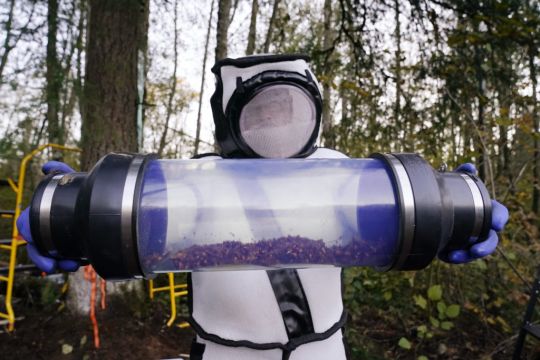Officials in Washington state said they had destroyed the first Asian giant hornet nest of the season, which was located near the town of Blaine along the Canadian border.
The Washington state Department of Agriculture said it eradicated the nest on Wednesday.
The nest was located in the base of a dead alder tree in rural Whatcom County, about two miles from a nest the agency eradicated last October and about one-quarter mile from where a resident reported a live sighting of an Asian giant hornet on August 11.
The site is about one-quarter mile from the Canadian border.

The Asian giant hornets are sometimes called murder hornets because they prey on other bees.
Asian giant hornets are the world’s largest hornet and are not native to North America. They prey on honey bees and other insects. They can conduct mass attacks on honey bee hives, destroying the hive in a matter of hours.
The hornets were first detected in the United States in 2019 when a hornet was reported in Whatcom County.
The two-inch-long invasive insects pose a threat to honeybees and native hornet species. While not particularly aggressive toward humans, their sting is extremely painful and repeated stings, though rare, can kill.
State workers in protective clothing began the eradication Wednesday by vacuuming 113 worker hornets from the nest. Then the team began removing bark and decayed wood near the base of the alder tree.
Removing the wood revealed that the hornets had excavated the interior of the tree to make room for the nest, which consisted of nine layers of comb.
The portion of the tree with the nest was cut and transported to Washington State University Extension in Bellingham for further analysis. The nest itself had nearly 1,500 hornets in various stages of development.
“While we are glad to have found and eradicated this nest so early in the season, this detection proves how important public reporting continues to be,” said Sven Spichiger, WSDA managing entomologist.
“We expect there are more nests out there and, like this one, we hope to find them before they can produce new queens.”







